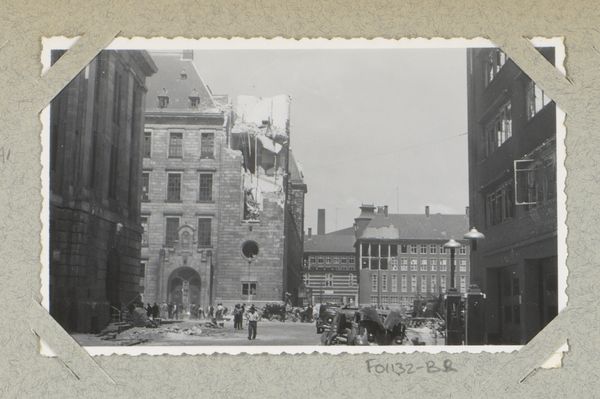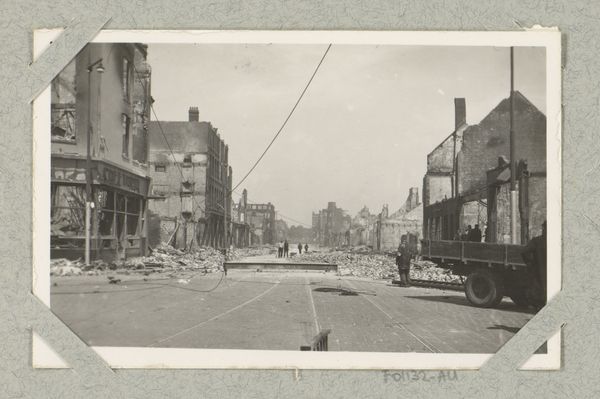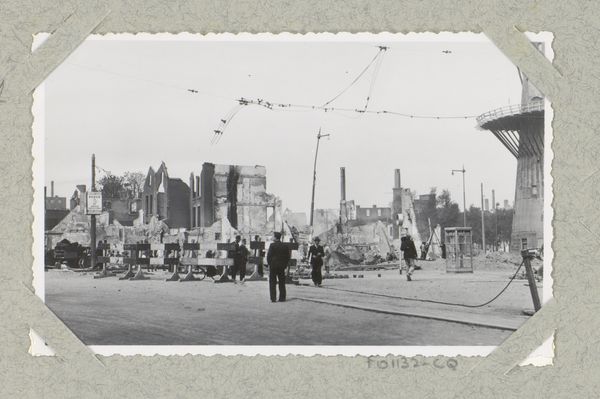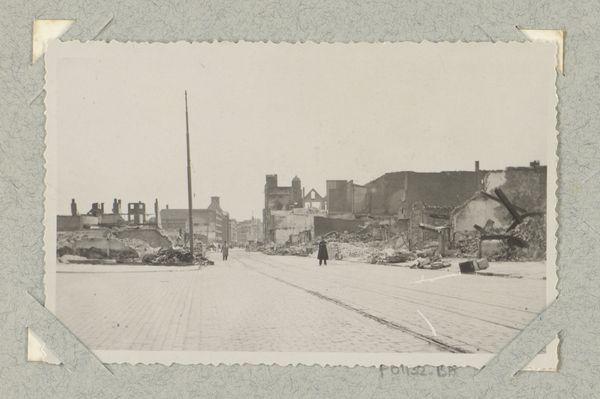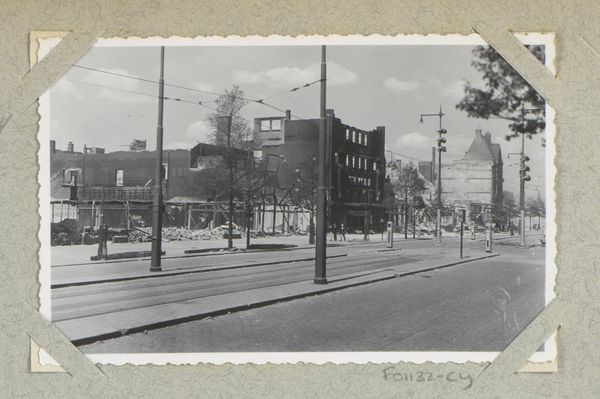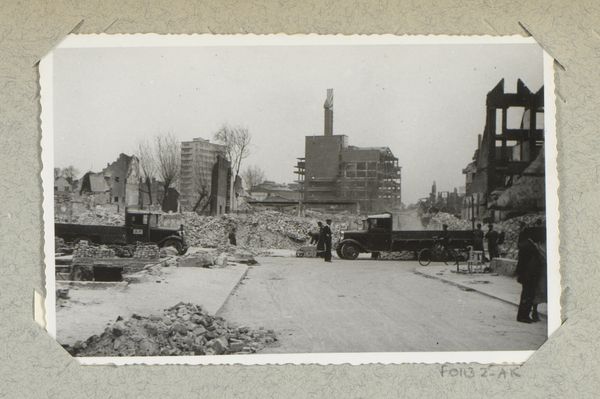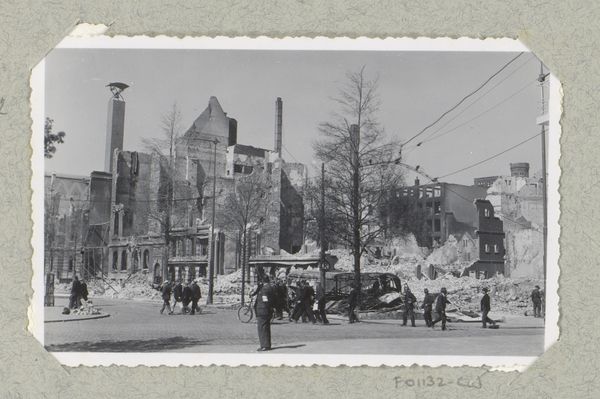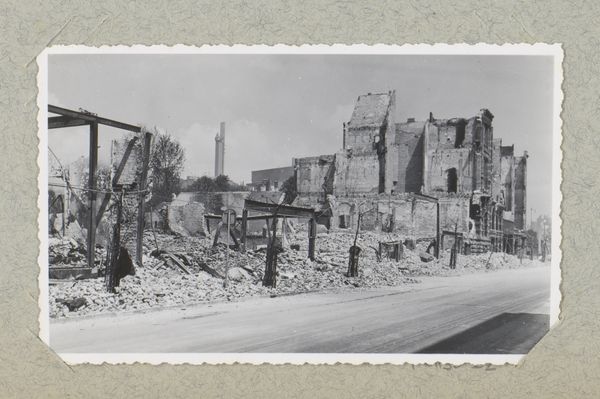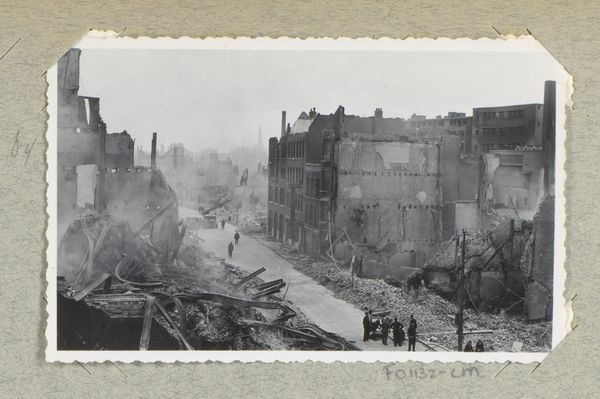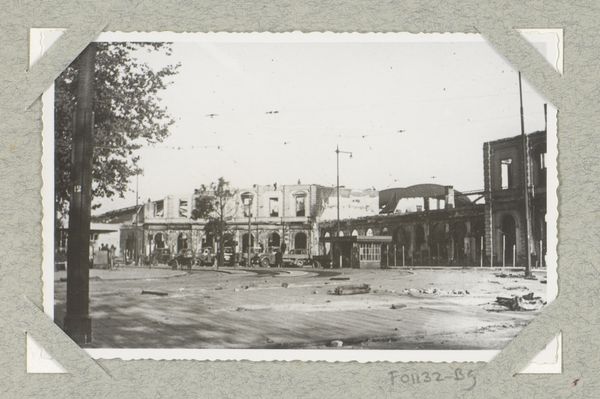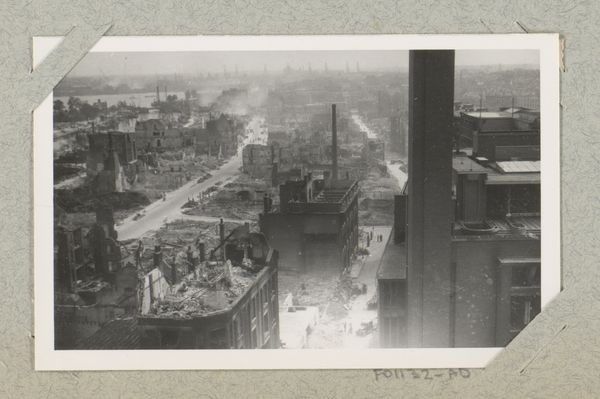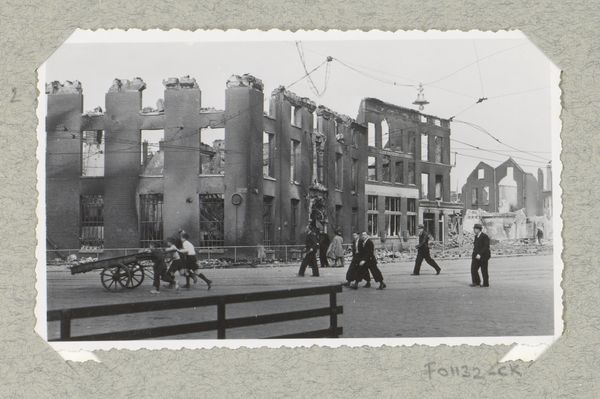
Dimensions: height 88 mm, width 136 mm
Copyright: Rijks Museum: Open Domain
Curator: J. Nolte's "Ruïnes van gebouwen te Rotterdam," dating roughly from 1940 to 1945, captures a landscape of utter devastation. It’s a striking photograph. Editor: Striking indeed. The scale of destruction is almost unreal, and the monotone adds to that bleak and somber mood. A sense of despair seems to permeate everything. Curator: Absolutely. Notice how Nolte frames the ruined buildings on either side, leading the eye down the street to what feels like an endless vista of debris. It is masterfully composed to give you that perspective. Editor: Yes, but look at the symbolism in those gutted buildings—hollowed windows like empty eye sockets staring out, telling stories of trauma and loss, houses turned into symbols of war's dehumanizing effect. Curator: The texture is compelling as well. Consider the contrast between the smooth expanse of the road and the rough, jagged edges of the demolished structures. It accentuates the violence done to this place. It's a play on materials and form. Editor: And yet, the photograph shows people walking through the ruins. A stark depiction of survival, hope, or even a forced march back into the void of what was home. Curator: That touch of humanity offers a poignant counterpoint, right? Look how their form blends with the skyline, with the horizon line and light... Editor: Those figures provide scale. The photograph evokes themes deeply entrenched in our understanding of wartime memory and recovery—both individual and communal. Curator: In short, "Ruïnes van gebouwen te Rotterdam" isn't just a historical document. Nolte’s artistic intent invites us to analyze and think more closely about form and affect. Editor: A heavy reminder etched in monochrome about what humanity, sadly, is capable of destroying. And it's as if we are also urged, at a deeper level, to restore some meaning to it.
Comments
No comments
Be the first to comment and join the conversation on the ultimate creative platform.
